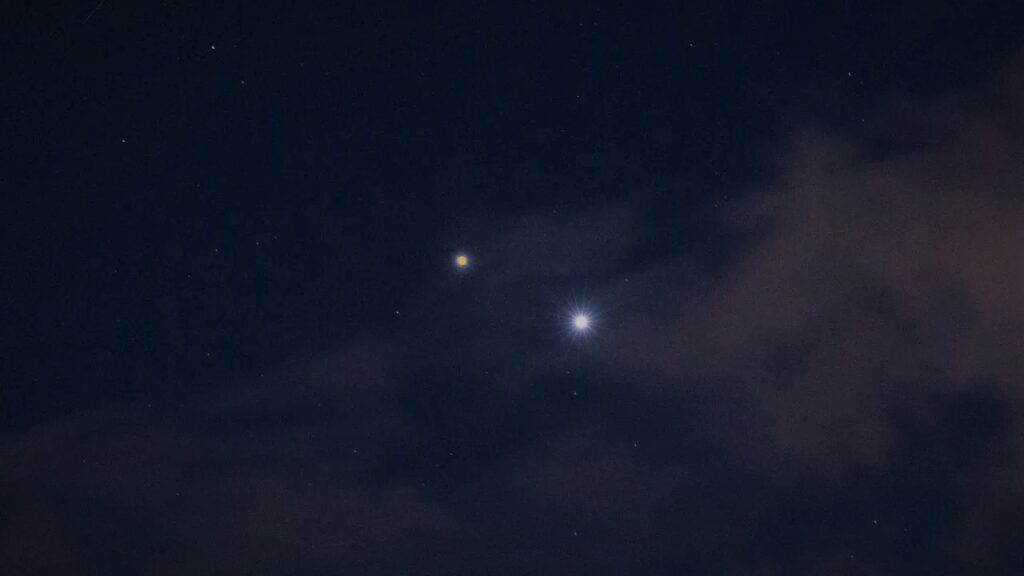The second summer month will begin with an interesting conjunction of Venus and Mars. On July 1, the apparent distance between them will be the smallest, but a week later they will “disperse” by only 4°. All this time they will be near Regulus — the brightest star of the constellation Leo. On July 20, a thin crescent moon will pass near it and Venus. However, this approach in Ukraine will be visible only in the early evening low over the horizon.
Also this month, two comets will pass perihelion with the visible brightness over 9th magnitude. On July 1, C/2023 E1 (ATLAS) will do this — it has been well visible in our latitudes for quite a long time, it will move across the constellations Ursa Minor and Draco, and on July 9 it will fly less than 11° from the celestial pole and 10° from the Polaris. More or less favorable conditions for observations of comet C/2021 T4 (Lemmon) from the territory of Ukraine will appear at the end of August, but it will come closest to the Sun on July 31. In areas south of 40°N, it will be possible to see it this night as an object of the 8th magnitude.

July 1
- Venus (-4,5ᵐ) is 3.5° west of Mars (1.7ᵐ)
- The Moon is 5° east of Antares (α Scorpio, 1.0ᵐ)
- Comet C/2023 E1 (ATLAS) is at perihelion, 1,027 AU (154 million km) from the Sun
July 3
- Full moon
July 4
- The Moon is at perigee, 360 150 km from the center of the Earth
July 6
- The Earth is in aphelion, 1,017 AU (152.1 million km) from the center of the Sun
July 7
- The Moon is 4° south of Saturn (0.8ᵐ)
July 8
- The Moon occults the ψ Aquarii (4,4ᵐ)
July 9
- The Moon is 4° south of Neptune (7,9ᵐ)
July 10
- The Moon is in the last quarter phase
- Mars (1,7ᵐ) is 0.6° north of Regulus (α Leo, 1.3ᵐ)
July 12
- The Moon is 2° north of Jupiter (-2.3ᵐ)
July 13
- The Moon is 3° north of Uranus (5,8ᵐ)
July 16
- Venus (-4,5ᵐ) is 3° west of Regulus
July 17
- New Moon
July 19
- The Moon is 3° north of Mercury (-0.4ᵐ)
July 20
- The Moon is at apogee, 406,290 km from the center of the Earth
- The Moon is 6° north of Venus (-4.4ᵐ) and 3° north of Regulus
July 24
- The Moon is 5° west of Spica (α Virgo, 1.0ᵐ)
July 25
- The Moon is in the phase of the first quarter
July 27
- Maximum activity of the Southern δ-Aquariids meteor shower (up to 20 meteors per hour)
July 28
- The Moon is 0.3° north of Antares (α Scorpio, 1.0ᵐ)
July 30
- Maximum activity of the meteor shower Northern δ-Aquariids (up to 25 meteors per hour)
July 31
- Comet C/2021 T4 (Lemmon) at perihelion, 1.483 AU (222 million km) from the Sun
Follow us on Twitter to get the most interesting space news in time
https://twitter.com/ust_magazine

